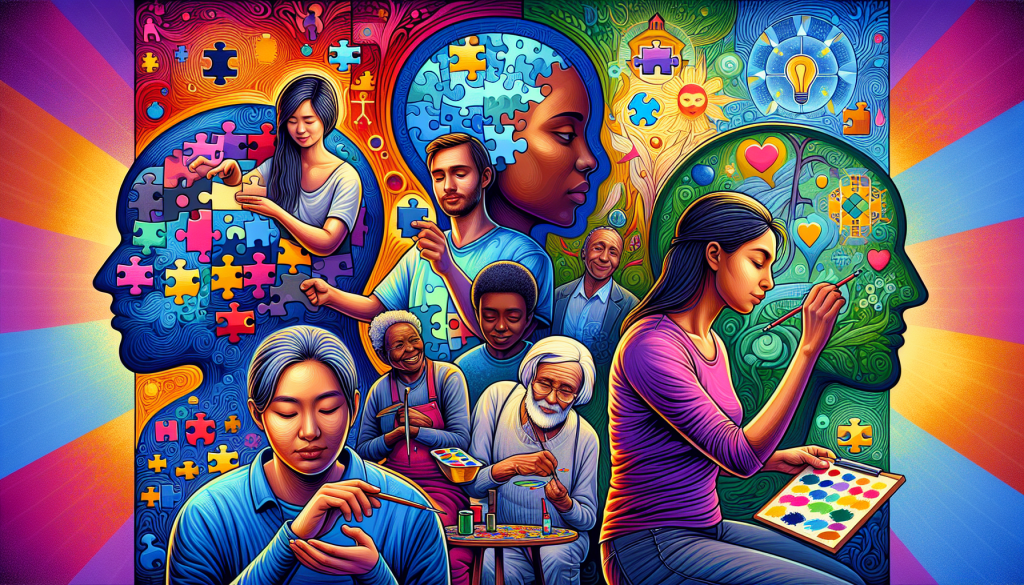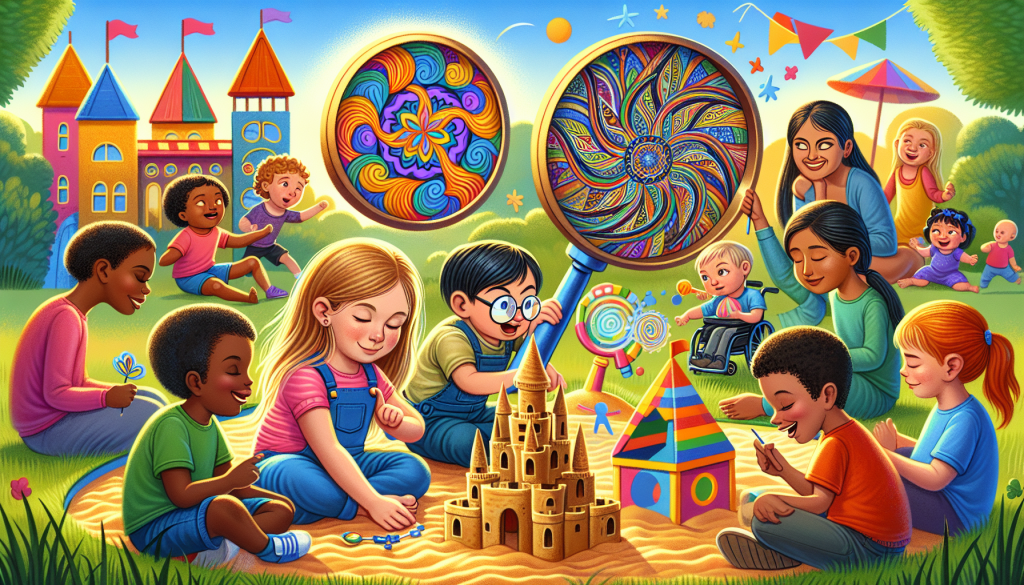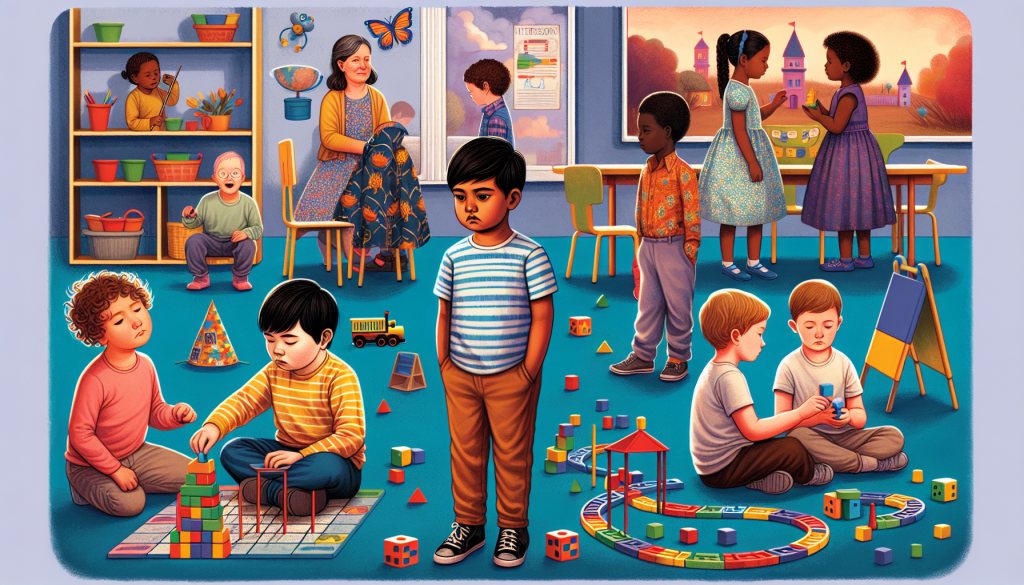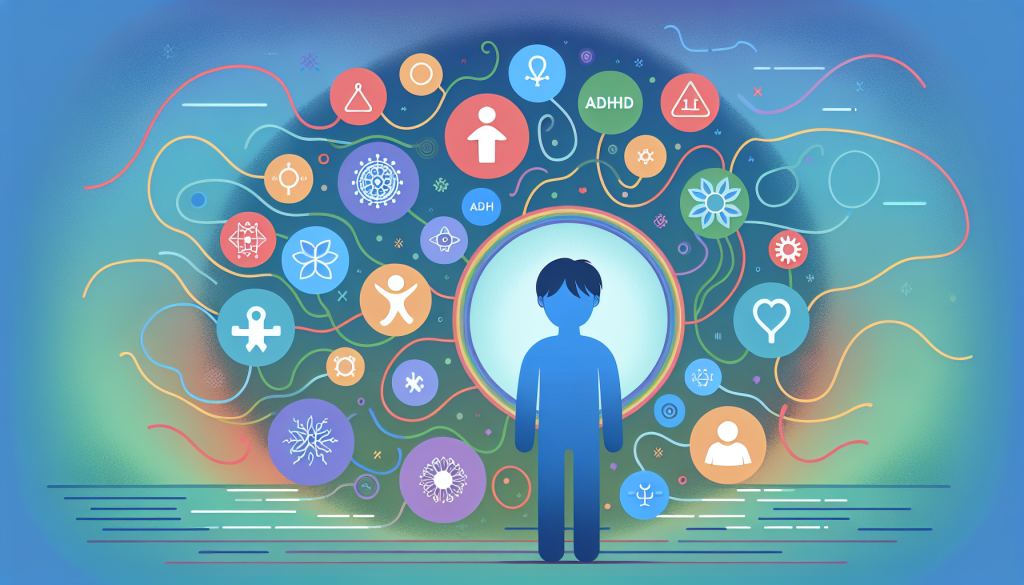Autism Spectrum Disorder (ASD) affects individuals uniquely, but common characteristics include social communication challenges and repetitive behaviors. This article explores these ASD characteristics, detailing the core traits, how they manifest, and what they mean for daily life. We’ll look at social communication deficits, repetitive actions, sensory sensitivities, unique interests, and common communication challenges.
Key Takeaways
- Autism Spectrum Disorder (ASD) includes significant social communication deficits and restricted behaviors that vary widely among individuals.
- Early identification of ASD signs, such as delayed milestones and atypical play skills, is crucial for timely intervention and support.
- Individuals with ASD often face challenges in social interactions and may experience co-occurring conditions like anxiety and depression, highlighting the need for comprehensive care.
Core Characteristics of ASD

Autism Spectrum Disorder (ASD) is marked by significant social communication challenges and behaviors that are restricted or repetitive. The spectrum nature of ASD means these characteristics can vary widely among individuals, reflecting a diverse range of social, communication, and behavioral challenges.
People with ASD often exhibit core symptoms differently, which underscores the need to recognize the spectrum’s broad and varied nature.
Social Communication Deficits
Social communication deficits significantly impact individuals with autism, affecting their ability to engage in daily social interactions. These deficits often manifest through poor nonverbal communication, such as avoiding eye contact and lacking gestures. This can make forming and maintaining friendships challenging, as initiating or responding to social approaches becomes difficult.
For many, these deficits lead to a profound struggle with social interaction skills. The inability to interpret social cues and the challenges in developing appropriate social responses exacerbate the difficulties in making friends and participating in social situations.
Tailored interventions are crucial for enhancing communication skills and social interactions for individuals with ASD.
Restricted and Repetitive Behaviors
Restricted and repetitive behaviors are a hallmark of autism spectrum disorder. Common examples include repetitive actions like hand flapping, spinning objects, and an insistence on routine. These behaviors serve various functions, from self-soothing to managing sensory input, but can also be a source of distress when routines are disrupted. Additionally, these repetitive body movements can be a significant aspect of the individual’s experience.
Children with autism often display these behaviors intensely, demanding sameness in their environment and showing significant discomfort during changes. Providing effective support and creating accommodating environments requires an understanding of child’s behavior and their underlying causes.
Additional Behavioral Traits

Beyond the core characteristics of ASD, individuals may exhibit a range of additional behavioral traits. These can include unusual behaviors, unique play preferences, and atypical sensory responses.
Recognizing and understanding these traits fosters acceptance and enables effective support for people with ASD.
Sensory Sensitivities
Sensory sensitivities are a common characteristic of autism spectrum disorders, affecting how individuals perceive and interact with their environment. Many people with ASD experience extreme discomfort from everyday sensory stimuli, such as bright lights or loud noises. This hypersensitivity can lead to avoidance of certain sensory inputs, significantly impacting daily living.
Conversely, some individuals may seek out intense sensory experiences like loud noises or bright colors for comfort due to hyposensitivity. These unique sensory responses necessitate tailored approaches to support sensory regulation and improve quality of life.
Unusual Interests and Activities
Individuals with ASD often demonstrate intense interests and engage in activities with remarkable focus and dedication. For example, a child may develop a strong affection for specific objects, such as trains, and spend hours engaged with them. These interests, though unusual, provide comfort and joy.
Repetitive activities, such as watching the same videos or repeating phrases from media, are also common. These behaviors, though sometimes challenging to manage, offer insights into the individual’s preferences and strengths, guiding supportive interventions.
Communication Challenges
Communication challenges significantly affect development for individuals with ASD, affecting both receptive and expressive language and their ability to use spoken language effectively.
These challenges complicate social interactions and make communicating needs and desires difficult.
Verbal and Nonverbal Communication
Verbal and nonverbal communication in individuals with ASD varies widely. Some have well-developed verbal skills, while others rely on nonverbal methods like sign language or communication boards. Expressive language, or the ability to articulate thoughts and desires, can be unevenly developed in those with ASD.
Receptive language, or the ability to comprehend spoken words, can also be challenging. Visual aids and concrete examples often support communication and learning, helping individuals with ASD navigate their interactions more successfully.
Echolalia and Repetition
Echolalia, or the repetition of phrases and words spoken by others, is a common behavior in ASD. This can occur immediately after hearing the phrase (immediate echolalia) or after a delay of days or weeks (delayed echolalia). Echolalia may make conversations challenging, but it also indicates linguistic development and can serve as a form of communication for some individuals.
Repetitive speech patterns, including the use of scripted phrases, often serve as means of self-regulation or communication. Understanding the context and purpose behind these repetitions provides valuable insights into the individual’s needs and preferences.
Early Signs of ASD in Children

Identifying early signs of autism spectrum disorder allows for timely intervention and support. Signs can often be noticed before one year of age, with the American Academy of Pediatrics identifying key indicators within the first two years of life, including the importance of an autism diagnosis.
These early signs include minimal joyful expressions, limited back-and-forth sharing of sounds, and a very limited vocabulary by 16 months.
Delayed Milestones
Delayed milestones are a significant early indicator of ASD. Typically, children respond to their names by turning and smiling, but those with ASD may not. Echolalia, where a child repeats phrases immediately or after a delay, can also be a sign.
Some children with ASD may prefer alternative communication methods, such as sign language or communication boards, showing the diverse ways they can interact with their environment.
Atypical Play Skills
Children with ASD often exhibit atypical play skills, demonstrating limited imagination and a preference for solitary activities. These behaviors contrast with the more interactive and imaginative play seen in typically developing children.
Recognizing these differences in play helps parents and caregivers provide appropriate support and interventions, fostering more inclusive play environments and enhancing social skills.
Impact on Daily Life

The impact of autism on daily life is profound and multifaceted. Individuals with ASD may display repetitive behaviors, especially during stressful situations, which serve as coping mechanisms. These behaviors, though sometimes seen as odd, play a crucial role in managing anxiety and maintaining a sense of control.
Difficulty Making Friends
Many individuals on the autism spectrum find it challenging to make friends due to their social communication deficits. Interpreting social cues and engaging in typical social interactions can be particularly difficult, resulting in feelings of frustration and loneliness.
However, success in friendships can be achieved when individuals connect with peers who accept their differences and share common interests. Participation in organized activities based on shared interests promotes meaningful social interactions and fosters friendships.
Adaptations and Supports
Adaptations and supports help individuals with ASD navigate daily life. Structured environments and clear visual schedules significantly reduce anxiety and improve daily living. Social skills training and sensory accommodations further enhance their ability to manage social situations and sensory input.
These supports facilitate daily life management and contribute to a higher quality of life, ensuring that individuals with ASD can thrive in their environments.
Co-Occurring Conditions

Autism spectrum disorders often come with additional mental disorders, complicating diagnosis and treatment. Recognizing these co-occurring conditions is vital for providing comprehensive care and support, as they greatly impact the individual’s overall well-being.
Anxiety and Depression
Anxiety and depression are common among individuals with autism spectrum disorder, exacerbated by the effort to mask their traits to fit into social norms. This masking can lead to emotional exhaustion and increased stress, further complicating mental health challenges.
Understanding the link between masking and mental health is crucial for addressing these issues effectively and providing the support needed to improve their quality of life.
ADHD and Other Related Disorders
Many individuals with autism also exhibit symptoms of ADHD, such as difficulties with attention and impulse control. Conditions like fragile X syndrome and tuberous sclerosis are also associated with an increased risk of autism, necessitating tailored interventions.
These co-occurring disorders highlight the complexity of ASD and the need for a multifaceted approach to the diagnostic and statistical manual, diagnosis, and treatment.
Masking and Coping Strategies
Masking and coping strategies help individuals with ASD navigate social situations and manage stress. However, masking can also lead to delayed diagnosis and worsened mental health conditions.
Social Masking
Social masking involves suppressing autism symptoms to conform to social norms. This can include forcing eye contact or mimicking facial expressions to appear more socially typical. Although it can help individuals navigate social situations, it often leads to emotional exhaustion and heightened anxiety.
Understanding the impact of social masking is crucial for providing supportive environments that allow individuals to be themselves without fear of stigma.
Coping Mechanisms
Effective coping mechanisms help manage the stress and anxiety associated with ASD. Mindfulness and relaxation techniques, such as deep breathing and listening to calming music, can significantly reduce stress.
Physical activities like exercise play a vital role in managing anxiety, providing a healthy outlet for stress and improving overall well-being. Creating structured routines further supports individuals with ASD, helping them feel more secure and in control.
Summary
In summary, understanding the characteristics and challenges of autism spectrum disorder is crucial for fostering acceptance and providing effective support. From social communication deficits and repetitive behaviors to sensory sensitivities and co-occurring conditions, each aspect of ASD requires a nuanced approach. By recognizing and addressing these diverse needs, we can create more inclusive and supportive environments for individuals with ASD, enhancing their quality of life and promoting their well-being.
Frequently Asked Questions
What are the core characteristics of autism spectrum disorder?
The core characteristics of autism spectrum disorder are social communication deficits and restricted, repetitive behaviors, which can differ significantly among individuals. Understanding these traits is essential for effective support and intervention.
How do sensory sensitivities affect individuals with ASD?
Sensory sensitivities can cause significant discomfort to individuals with ASD from ordinary stimuli such as bright lights and loud noises, which can hinder their daily activities and social interactions. Understanding these sensitivities is crucial for creating supportive environments.
What are some early signs of autism in children?
Early signs of autism in children may manifest as minimal joyful expressions, limited back-and-forth sound sharing, and a restricted vocabulary by 16 months. Recognizing these signs early can lead to timely support and intervention.
How does ASD impact daily life?
ASD often impacts daily life by causing challenges such as repetitive behaviors, difficulties in social interactions, and a preference for structured environments, which can help lessen anxiety. Adapting to these needs is essential for improving overall functioning.
What are some effective coping mechanisms for individuals with ASD?
Mindfulness and relaxation techniques, along with structured routines and physical activities, are effective coping mechanisms for individuals with ASD. These strategies help reduce stress and anxiety, fostering a sense of stability and well-being.
